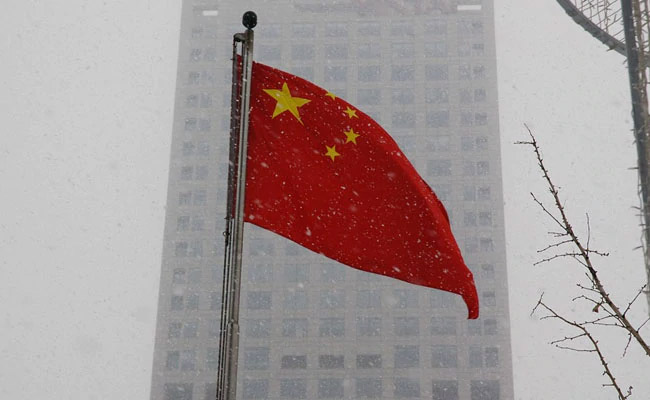
Beijing- China’s economy, which suffered 6.8 per cent slump in the first quarter due to the coronavirus pandemic – the worst in 44 years, bounced back posting 4.9 per cent growth between July and September buoyed by the government’s sweeping efforts to stimulate demand and consumption.
The world’s second-largest economy, the first to have been hit by the COVID-19 early this year and the earliest to have recovered while the rest of the world reeled under the pandemic lockdowns, grew faster than the 3.2-percent growth posted in Q2, data released by the National Bureau of Statistics (NBS) said on Monday.
In the first three quarters, China’s GDP expanded 0.7 per cent year-on-year, returning to growth after the 1.6-per cent contraction in the first half of the year and the 6.8-per cent slump in Q1, the data showed.
To soften the impact of the COVID-19 shock, the Chinese government has rolled out a raft of measures, including more fiscal spending, tax relief, and cuts in lending rates and banks’ reserve requirements to stabilize growth and employment.
The near five per cent growth in Q3 is a far cry from the slump the Chinese economy suffered when coronavirus first emerged in Wuhan in December last year and led to shutdowns of factories and markets all over the country during the first three months of this year.
China’s GDP took the worst hit since the disastrous Cultural Revolution in 1976, plummeting by 6.8 per cent in the first quarter of 2020 as the country took unprecedented measures to fight the coronavirus pandemic that brought the world’s second-largest economy to a standstill.
It was the worst contraction of the economy since China started recording quarterly figures back in 1992.
But as the epidemic is largely brought under control domestically, factories and schools have reopened and tourist sites across the country have resumed their usual hustle and bustle, state-run Xinhua news agency said.
In Q3, major indicators returned to positive territory, with industrial output rising 5.8 per cent and retail sales reporting the first quarterly expansion this year, up 0.9 per cent year-on-year.
The country’s fixed-asset investment went up 0.8 per cent year-on-year in the first three quarters, reversing a decline of 3.1 per cent in the first half of this year.
The per capita disposable income rose 0.6 per cent in the first nine months, compared with a decline of 1.3 per cent in H1.
“Seen from the trends of the key indicators, China’s epidemic prevention and economic recovery are at the world’s forefront, which shows the strong resilience and vitality of the economy,” Liu Aihua, spokesperson of the NBS, told the media.
Among the bright spots, new growth drivers including the Internet-powered economy and new infrastructure have assumed a bigger role in boosting growth, and the contribution of domestic demand is steadily picking up, Liu said.
Monday’s data showed consumption pulled up GDP growth by 1.7 percentage points in Q3, compared with a 2.3-per cent drag on growth in Q2.
Observers say draconian lockdown measures to control the COVID-19 combined with some government stimulus appeared to have worked well.
“The unleashing of the potential of China’s super-large market not only demonstrates the country’s basic strategy of expanding domestic demand, but will also facilitate the recovery of the entire world economy,” Liu said.
Despite the improvements, the foundation for sustainable recovery requires further consolidation due to global uncertainties and uneven performance at home, Liu cautioned.
“Overall, China has the foundation, conditions and confidence to maintain the current trend in Q4 and the full year,” Liu added.
In the latest World Economic Outlook report released earlier this month, the International Monetary Fund (IMF) projected China’s economy to grow by 1.9 per cent in 2020, 0.9 percentage points above the IMF’s June forecast projecting a positive growth this year despite the pandemic.
For future policy moves, China should maintain the stability and continuity of macro-control policies to consolidate the foundation for sustained recovery, while further increasing policy support for key areas and weak links to achieve development goals and tasks for the whole year, said Wen Bin, chief analyst at China Minsheng Bank.
In a research report on the data, Lu Ting, chief China economist with Nomura, expects China will neither add more easing measures nor start tightening in the near term.
China will carry out what it planned in late May for the scheduled budget and government bond issuance, while on monetary and credit policies, the period of quickly accelerating credit growth is over, the report said.
“We do not expect any reserve requirement ratio cuts or rate cuts before end-2020, but expect some more liquidity injections via low-profile channels such as medium-term lending facilities and re-lending,” the Xinhua quoted the report as saying.
Follow this link to join our WhatsApp group: Join Now
Be Part of Quality Journalism |
Quality journalism takes a lot of time, money and hard work to produce and despite all the hardships we still do it. Our reporters and editors are working overtime in Kashmir and beyond to cover what you care about, break big stories, and expose injustices that can change lives. Today more people are reading Kashmir Observer than ever, but only a handful are paying while advertising revenues are falling fast. |
| ACT NOW |
| MONTHLY | Rs 100 | |
| YEARLY | Rs 1000 | |
| LIFETIME | Rs 10000 | |













